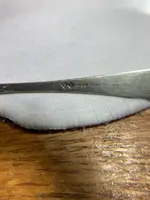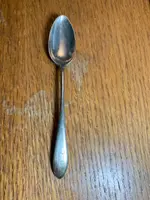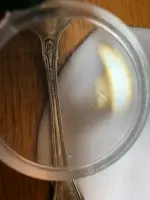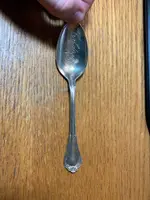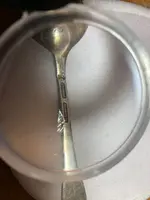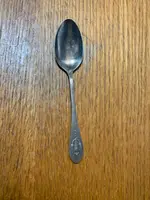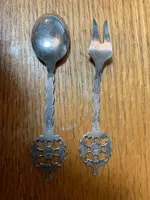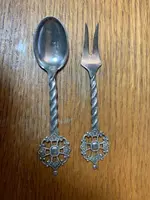You’re doing pretty good on your own research.
Yes, the first spoon is by Gorham. Their flatware carries all manner of additional marks as letters in circles and diamonds. The 'ST' marks are often reported.
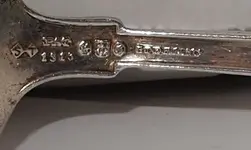
No-one knows for sure what these letters are for, except that they aren’t date letters as such. Gorham did use date letters, starting from ‘A’ in 1868, but they only got as far as ‘Q’ before abandoning the system and in any case did not use these letters on flatware or small items. It has been suggested that they relate to some internal traceability or quality marking system and/or may have been applied to items which were exclusive to particular retailers.
Plain patterns are the most difficult to date, but that looks like a variation on ‘Mothers/Mothers-Old' that dates from 1875. However, it was used for a long time with minor variations. This is from Gorham’s 1909 catalogue, where it is referred to as “The Mother’s” and your spoon has close resemblance to the style of the coffee spoon.
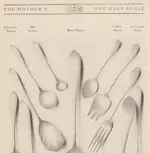
The second spoon is also Gorham. The pattern is known as ‘Norfolk/Villa Norfolk’ and was sold by Gorham as “The Norfolk”. Designed by William C. Codman in 1904.
The third spoon is, as you say, by Lunt of Greenfield, Massachusetts in ‘Mount Vernon’ pattern designed by George C. Lunt. It was first introduced in 1905 (hence the patent date for 1905 on your piece) but was still being made in 1997 (!). However, the spoon has the RLB mark for ‘Rogers, Lunt & Bowen’ which was only in use until 1935, after which the company name was shortened to ‘Lunt Silversmiths’.
The Norwegian set has no maker identification, could be from any number of producers and of indeterminate age beyond ‘vintage’. It is, as you say, ‘King’s Cross’ pattern but this was widely copied across multiple makers… notably for souvenir spoons and sets. If it were a prestigious maker (eg Thomsen & Knudsen made a lot of this stuff) it would be marked (eg with ‘TK’ before the 40GR mark). The ‘40GR’ mark itself relates to the amount of silver used in the electro-plating bath, usually containing a dozen spoons and a dozen forks. As such it indirectly relates to the thickness of the plating on the final items. Good quality plate would use 90 grams of silver, 40 grams would be lower quality, and 20 grams would be the bare minimum.
